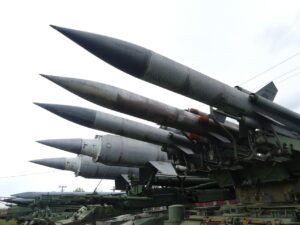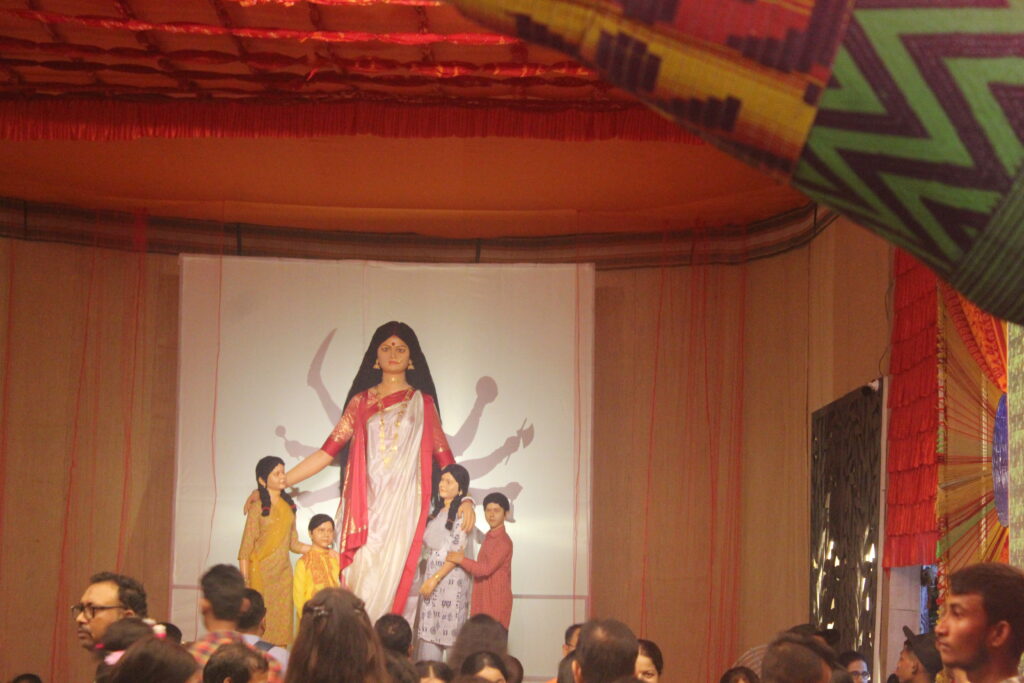
Durga and children in normal attire
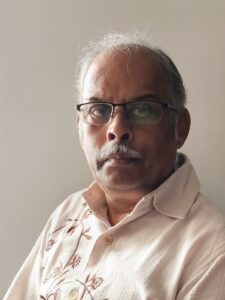
Photos and Text By Rathin Das*
Kolkata: It is difficult to guess if UNESCO’s global intangible cultural heritage tag for Kolkata’s Durga Puja has made any difference to the enthusiasts’ fortunes or lives of the craftsmen who toil for months to erect magnificent structures and colourfully decorated deities presiding over these sites for a week in autumn every year.
While several Durga Puja committees continue to make their pandals as huge replicas of famous structures and buildings like the Burj Khalifa, the Eiffel Tower or Disney Land or just scale models of various landmarks in India or abroad, many others have often recreated scenes from rural Bengal in the heart of the metropolis.
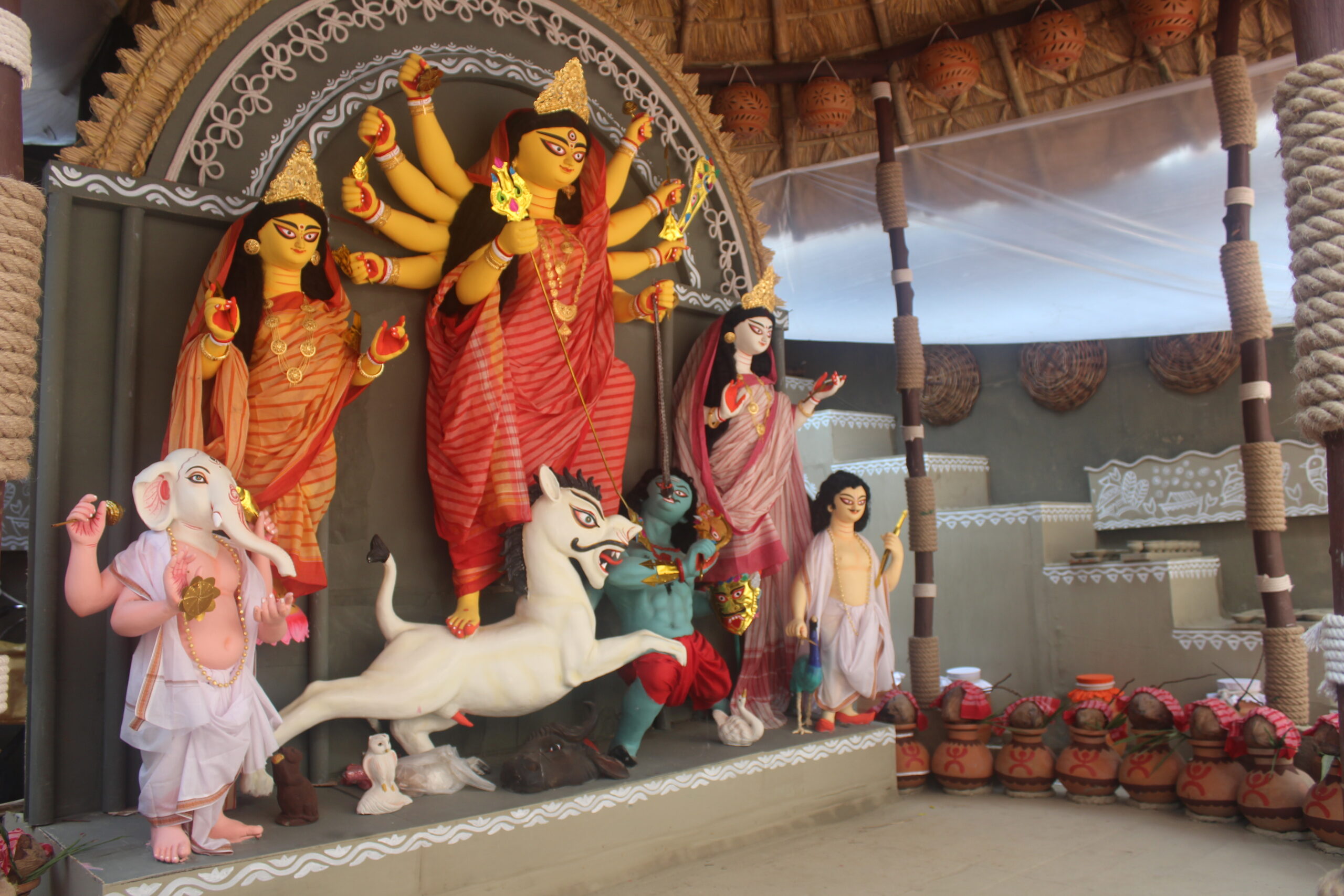
But significant among the extravaganza of craftsmanship was the prevalence of social awareness themes of many puja pandals. Though the weeklong Durga Puja festival was primarily a Hindu event, its secular credentials crop up every now and then across the city’s several thousand pandals.
One stumbled upon a pamphlet at Naktala in the deep south of the city stating that classical singer Ustad Rashid Khan, who died earlier this year, was the former Chairman of the club that had chosen ‘joint family’ as the theme for their pandal this year.
About 20 kilometres north in Tala, some ‘acknowledgement’ plaques at the exit gate announced that the huge metal platform at the entry was erected by one Mohammad Ismail and his team while the people who did the iron fabrication work were led by one Lakshman Roy.
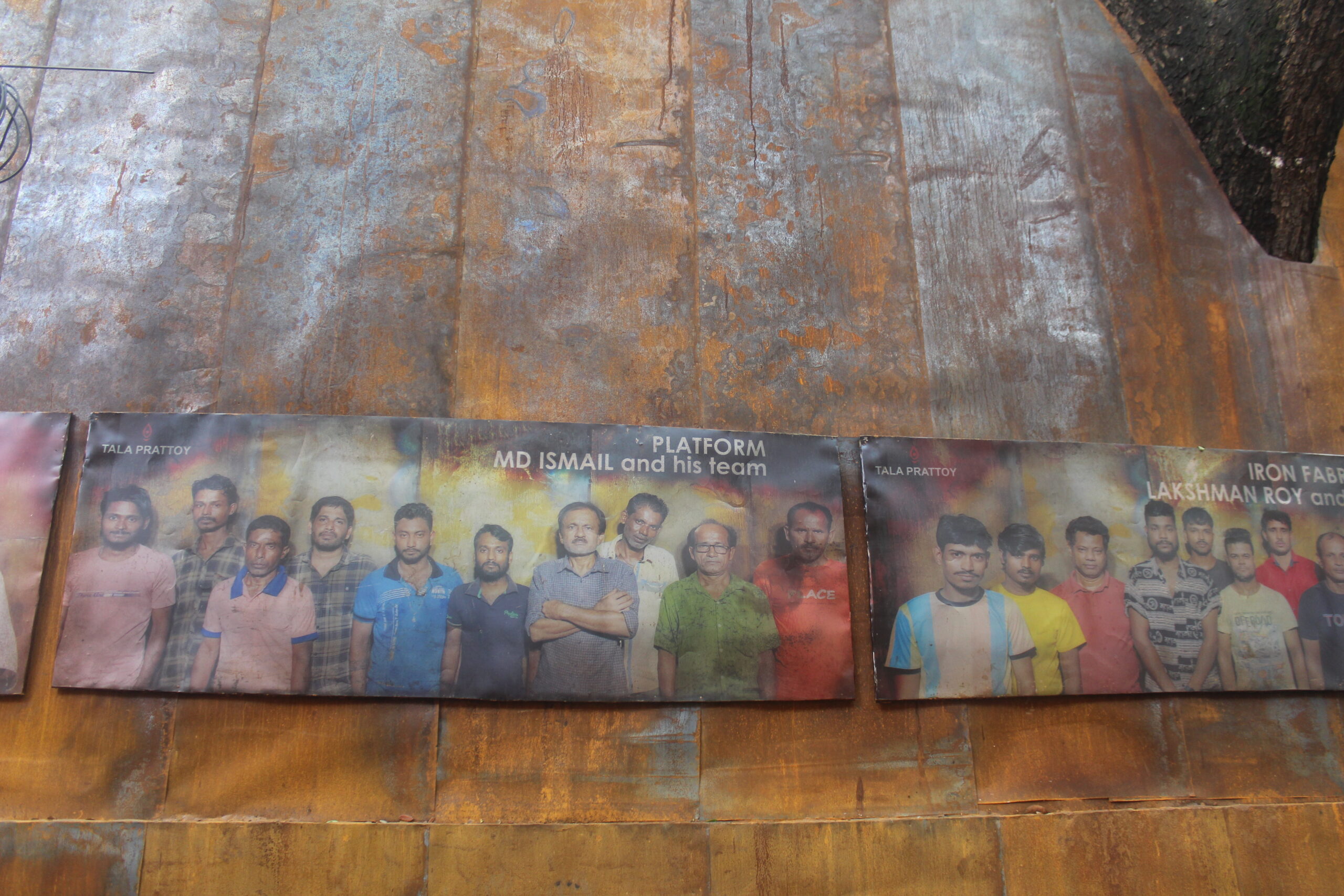
Such functional secular ethos and empathy for the working class were visible across the city’s numerous puja pandals – whether by design or by default.
Back in Naktala, the ‘joint family’ theme was aptly depicted with Mother Durga holding aloft a big pot of boiling rice while her four children await their meal sitting near her feet below.
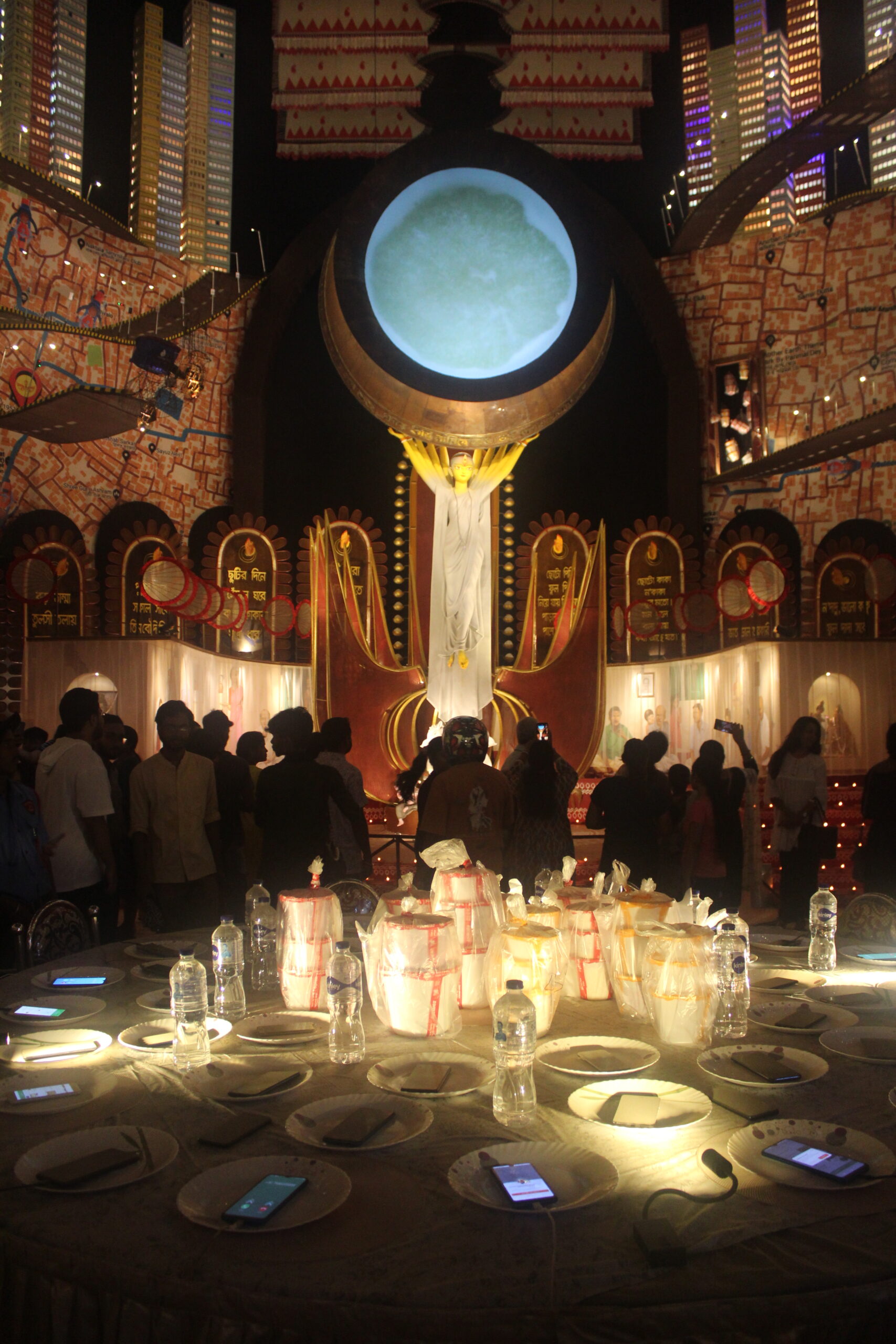
One side of the globe-like pandal showed a traditional joint family of three generations dining together on the floor. But the other part depicted the splitting up of a joint family system with a huge round dining table atop which every plate has a cell phone ordering fast food from popular delivery networks. The general ambience of the pandal showed the city’s Google map, tall skyscrapers and roads full of two-wheelers zooming with food parcels ordered by individual members of the joint family.

“This southern suburb of Kolkata was host to thousands of refugees from East Bengal who crossed over since 1947. They all lived in a joint family system which is now breaking up”, Prabir Dubey of Naktala Udayan Sangha explained the theme.
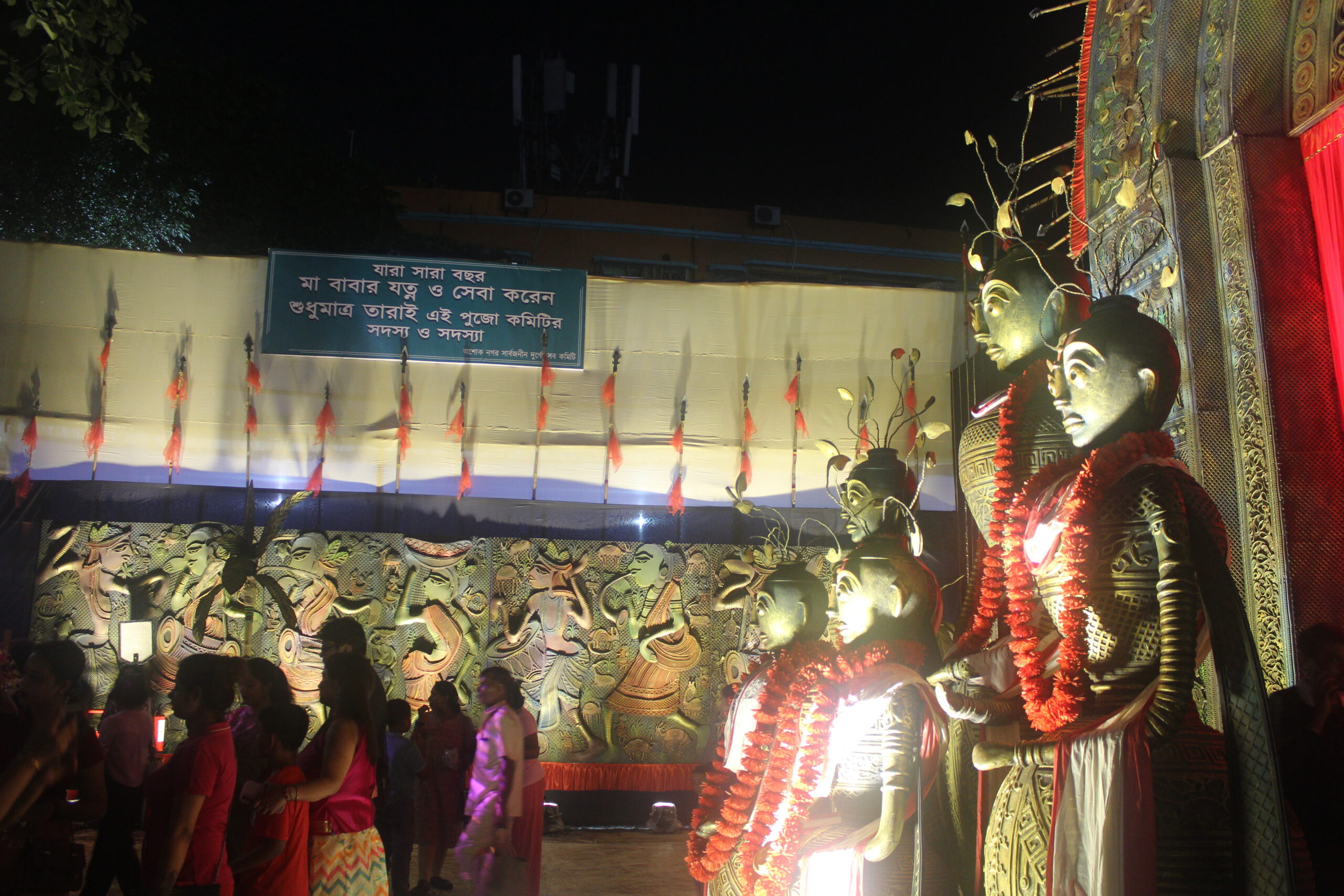
Only a few kilometres away in Ashok Nagar of the Tollygunje area, one pandal had not only chosen care of elderly parents as its theme but also prominently announced that “only those who take care of their elderly parents throughout the year are members of this puja committee”. It would be wonderful if the claim were true.

To prove this point, the interiors of their pandal displayed recent photos of elderly couples in the neighbourhood, an attraction tempting locals to come and search out their parents and grandparents among the hundreds on show.
In Bhowanipur in central Kolkata, one pandal displayed life-size models of tramcars which are now being phased out after a century of ferrying people leisurely across the city.
At the northern suburb of Sodepur, the 112-foot Durga idol was the centre of attraction but many questions were being asked about how it could be taken out for immersion in one piece. Dismantling it was bound to hurt the religious sentiments of devotees.
In the Southern Avenue area, the Lake Youth Corner pandal used wooden puppets as their theme. The theme was theoretically linked to Goddess Durga holding all the strings of people’s lives just as the puppeteers do.
Two years back, this puja committee had used ‘gamchhaas’ (Indian bath towels) as their theme just to give bulk orders to handloom weavers whose trade had suffered serious setbacks during the COVID pandemic.
Despite such brilliant ideas about themes, excellent craftmanship for the structures and beautiful colour schemes on the deities, one section of Kolkattans shunned these pandals sheerly because they attracted huge crowds from rural and suburban areas.
“It is not possible for ‘Bhadraloks’ to enter those puja pandals”, is the usual refrain in upper-middle-class homes with double incomes and a single child. Though a simple translation of ‘Bhadralok’ would mean ‘gentleman’, the connotation in the statement shows a clear disdain of the educated class for its poorer cousins and the working class who “choked” the puja pandals, roads and eateries around during these few days.
Apathy towards the working class was also manifested at the footpath stalls selling cottage industry handicrafts and paintings. Haunted by a lack of buyers for such artefacts, the sellers while away their time on the most popular activity of the modern age – the cell phone.
Roadblocks, many of them illegally put up by the puja committees themselves, are indeed a serious civic problem the citizens face every year but very few dare to protest.
Another dark side of the weeklong festivities is complaints about the exploitation of the security personnel deployed, who actually paid just Rs 200/- per seven-hour shift while the agencies charge at least Rs 450/- from the puja committees. The slaying of Mahishasura, the devil, for ages could not touch the evil of economic exploitation at the puja pandals.
*Senior journalist



